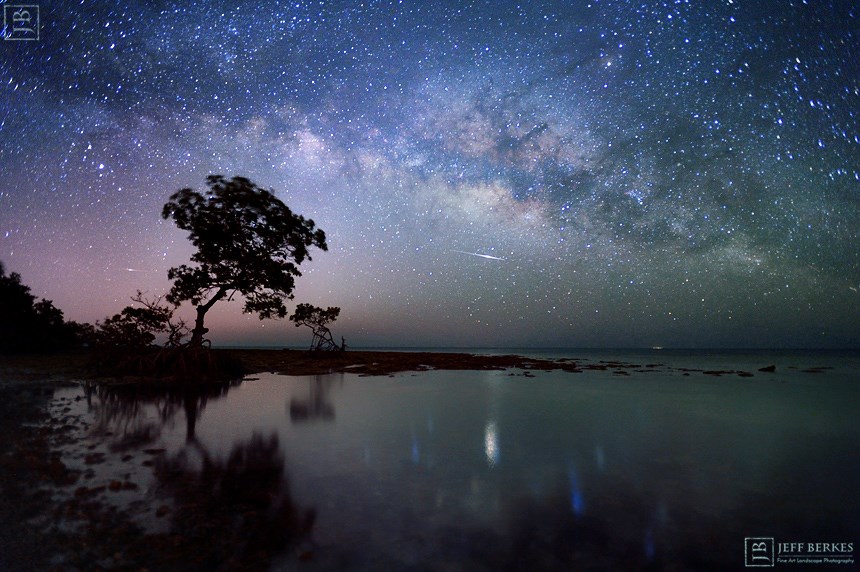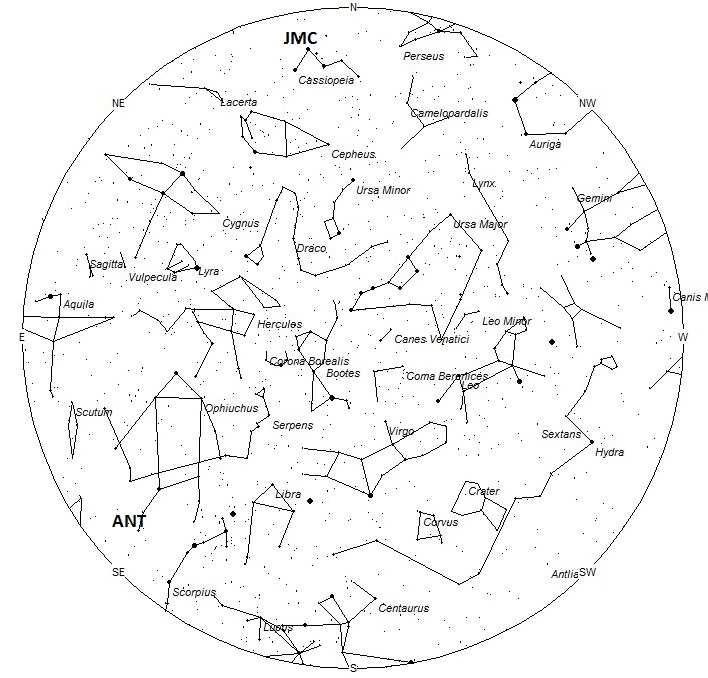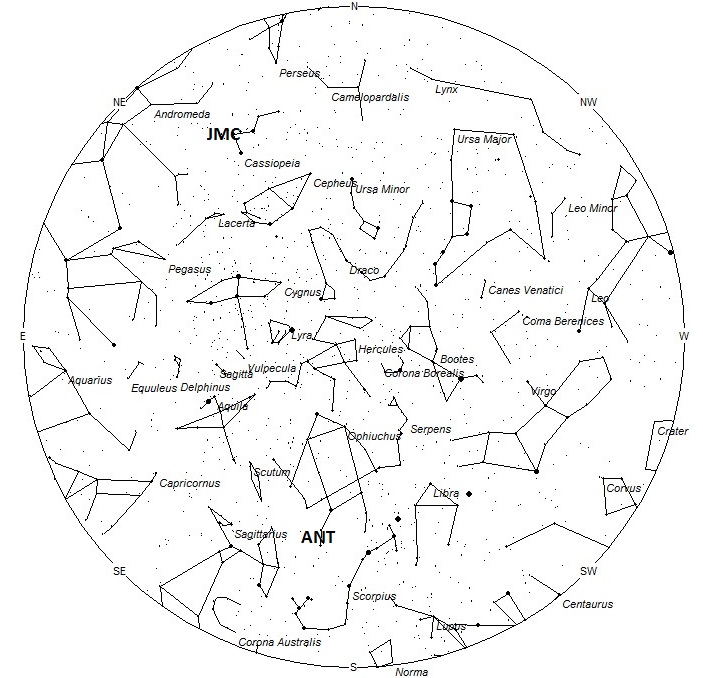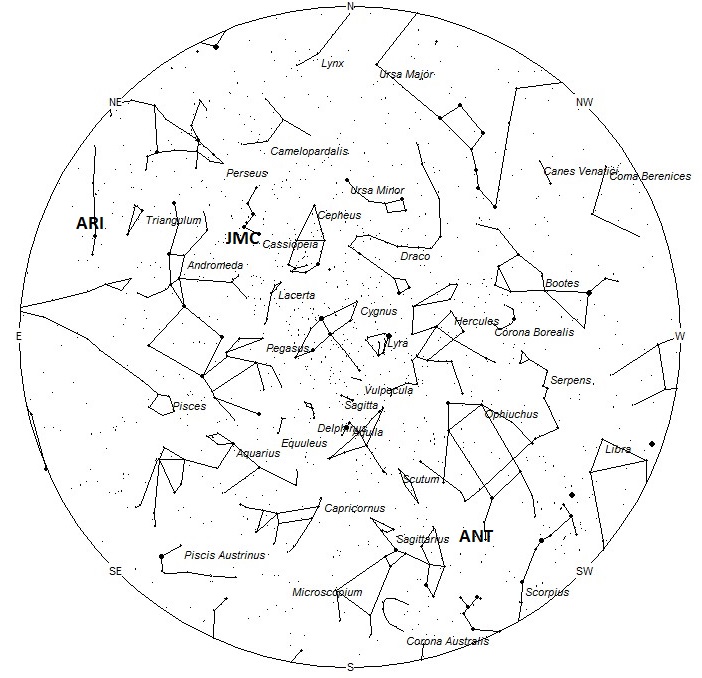
Florida Keys Milky Way Madness Tour – February 2015 © Jeff Berkes.
June is another slow month for meteor activity. There are no major showers active in June and only the Anthelion source can be counted on for continuous activity. Even the Anthelion radiant is located so far south this time of year that rates rarely exceed two per hour as seen from the northern hemisphere. Sporadic rates continue to remain slow as seen from the mid-northern hemisphere (45 N). As seen from the southern tropics (25 S) sporadic rates continue to be strong this month.
During this period the moon reaches its full phase on Tuesday June 2nd. At this time the moon will be located opposite the sun and will be in the sky for most of the night as seen from mid-northern latitudes. This entire period is affected by bright moonlight and only a fraction of the actual meteor activity will be seen. The estimated total hourly meteor rates for evening observers this week is near 2 for observers situated at mid-northern latitudes and 3 for observers viewing from the southern tropics (latitude 25 S.). For morning observers the estimated total hourly rates should be near 4 for observers situated at mid-northern latitudes and 8 for observers viewing from the southern tropics. The actual rates will also depend on factors such as personal light and motion perception, local weather conditions, alertness and experience in watching meteor activity. Rates are reduced during this period due to intense moonlight. Note that the hourly rates listed below are estimates as viewed from dark sky sites away from urban light sources. Observers viewing from urban areas will see less activity as only the brightest meteors will be visible from such locations.
The radiant (the area of the sky where meteors appear to shoot from) positions and rates listed below are exact for Saturday night/Sunday morning May 30/31 These positions do not change greatly day to day so the listed coordinates may be used during this entire period. Most star atlases (available at science stores and planetariums) will provide maps with grid lines of the celestial coordinates so that you may find out exactly where these positions are located in the sky. A planisphere or computer planetarium program is also useful in showing the sky at any time of night on any date of the year. Activity from each radiant is best seen when it is positioned highest in the sky, either due north or south along the meridian, depending on your latitude. It must be remembered that meteor activity is rarely seen at the radiant position. Rather they shoot outwards from the radiant so it is best to center your field of view so that the radiant lies at the edge and not the center. Viewing there will allow you to easily trace the path of each meteor back to the radiant (if it is a shower member) or in another direction if it is a sporadic. Meteor activity is not seen from radiants that are located below the horizon. The positions below are listed in a west to east manner in order of right ascension (celestial longitude). The positions listed first are located further west therefore are accessible earlier in the night while those listed further down the list rise later in the night.
These sources of meteoric activity are expected to be active this week. Details of each source will continue next week when the moonlight will not be so intense.
| SHOWER | DATE OF MAXIMUM ACTIVITY | CELESTIAL POSITION | ENTRY VELOCITY | CULMINATION | HOURLY RATE | CLASS |
| RA (RA in Deg.) DEC | Km/Sec | Local Daylight Saving Time | North-South | |||
| Anthelions (ANT) | – | 17:32 (263) -23 | 30 | 01:00 | 1 – 2 | II |
| June Mu Cassiopeiids (JMC) | Jun 02 | 00:44 (011) +53 | 42 | 08:00 | <1 - <1 | IV |
| Daytime Arietids (ARI) | Jun 07 | 02:24 (036) +23 | 42 | 10:00 | <1 - <1 | II |
 American Meteor Society
American Meteor Society



I saw a bright fireball over Anacortes, Washington on the night of June 5, 2015. It seemed to be traveling from North to South at a very fast rate of speed, and it exploded twice and then was gone. Interested in any information available regarding what was seen. Thanks.
We saw 2 fireballs over Forney, TX between 2 and 3am June 2nd. It was awesome!